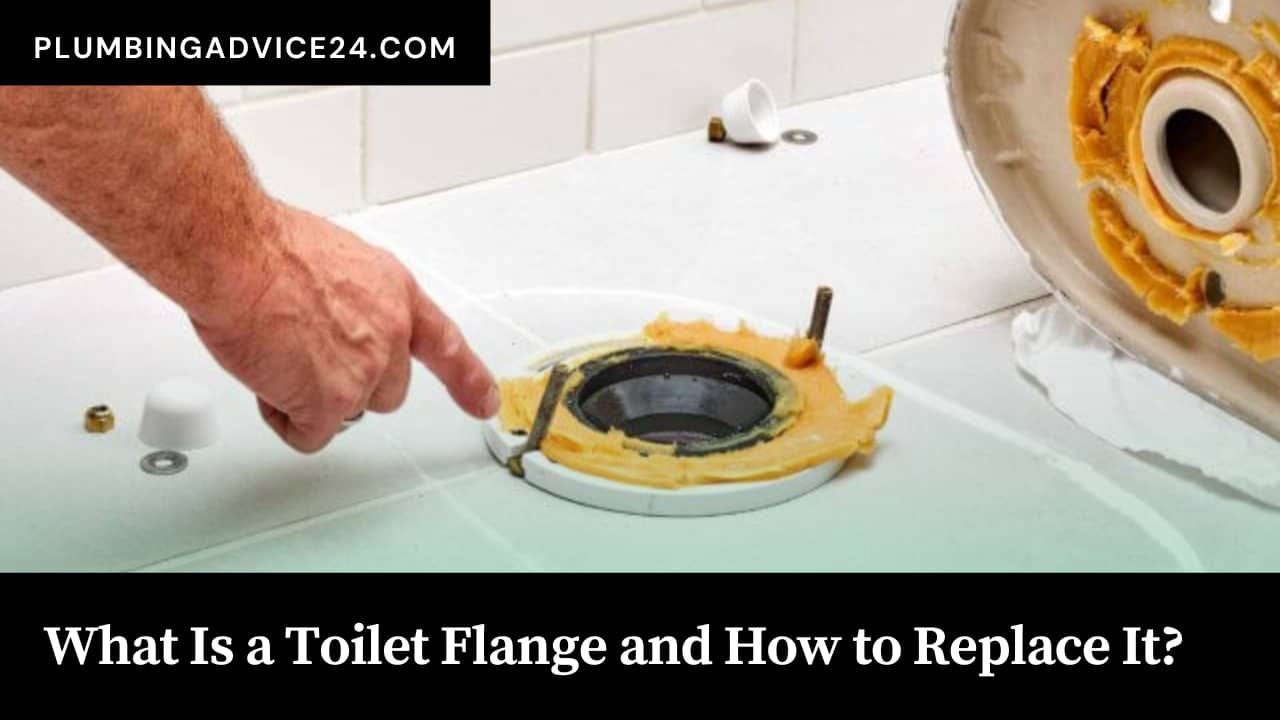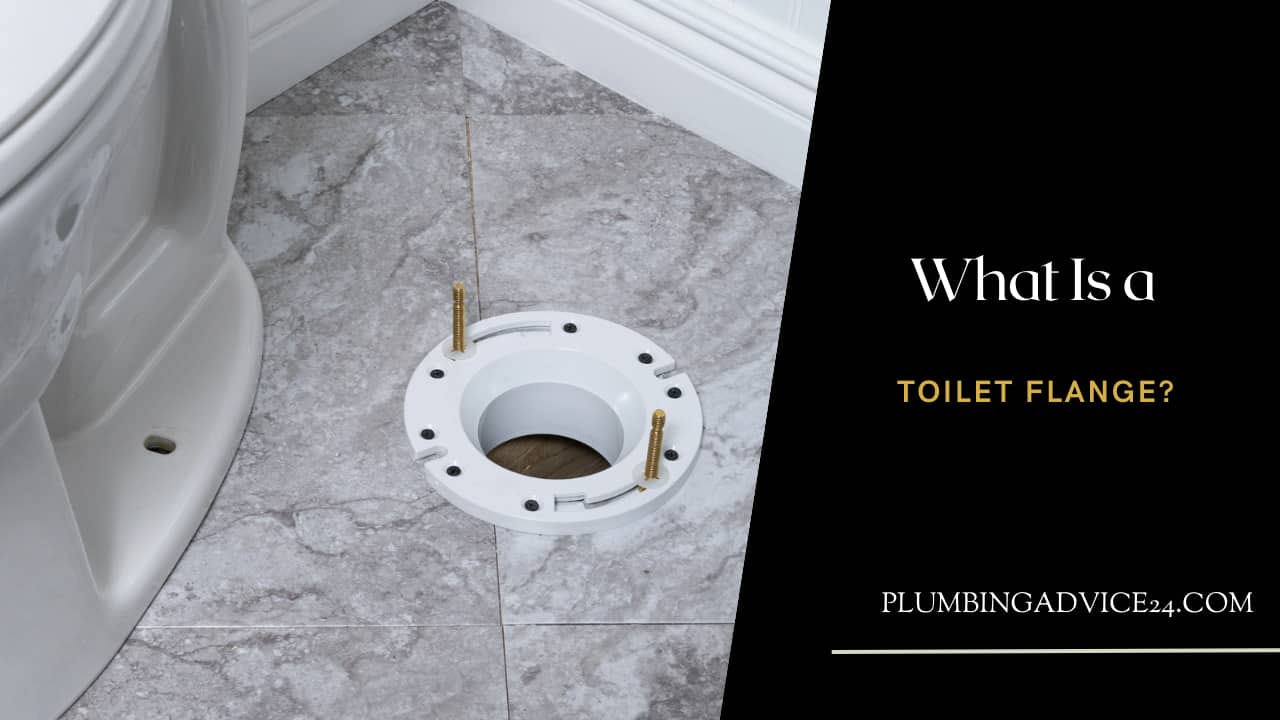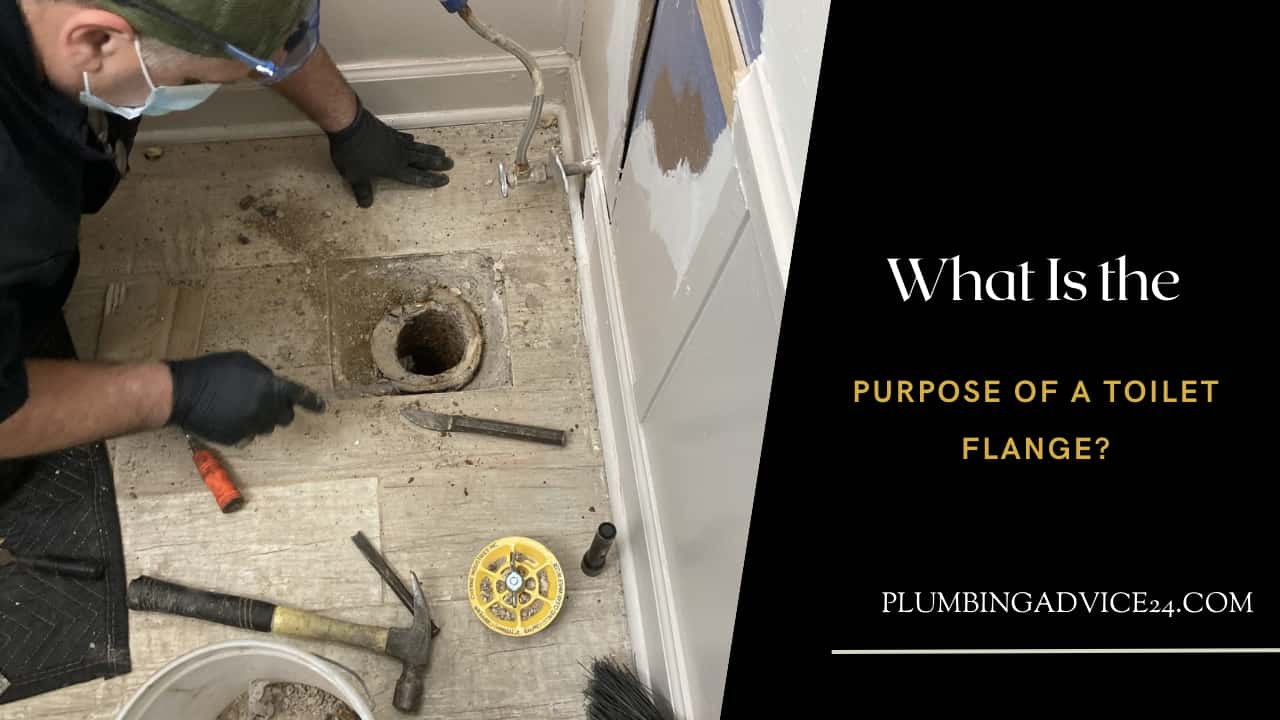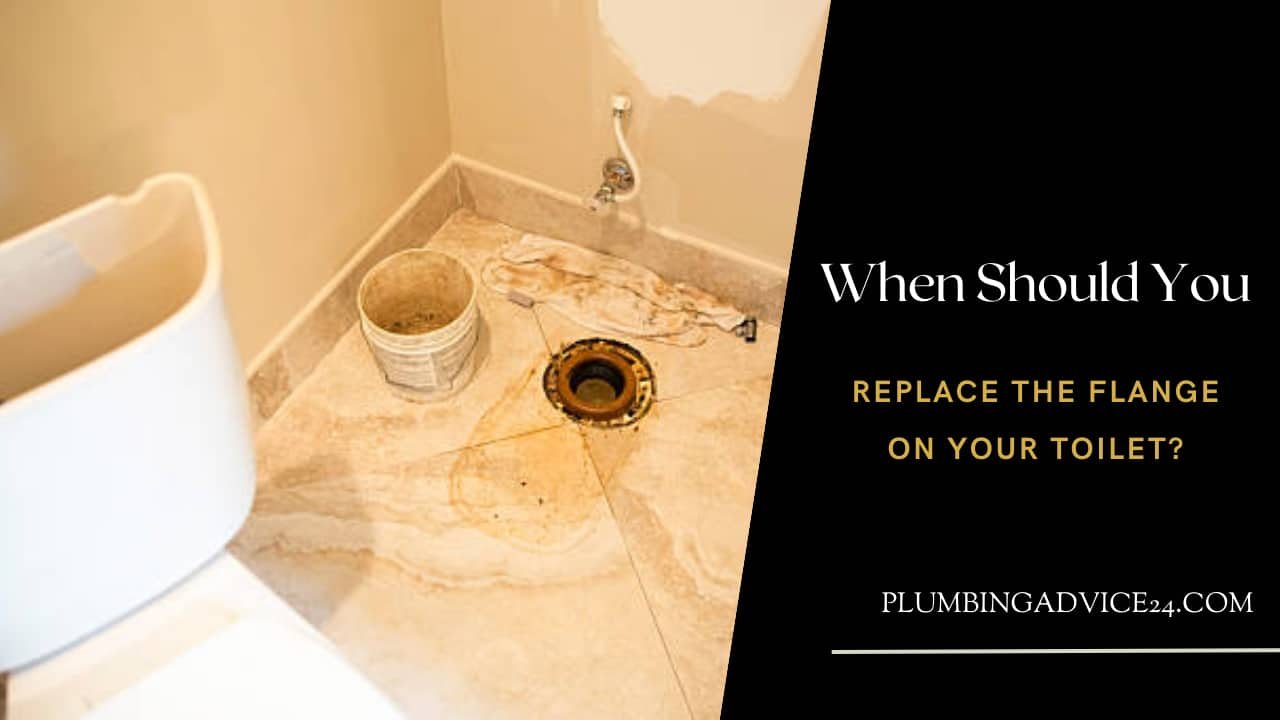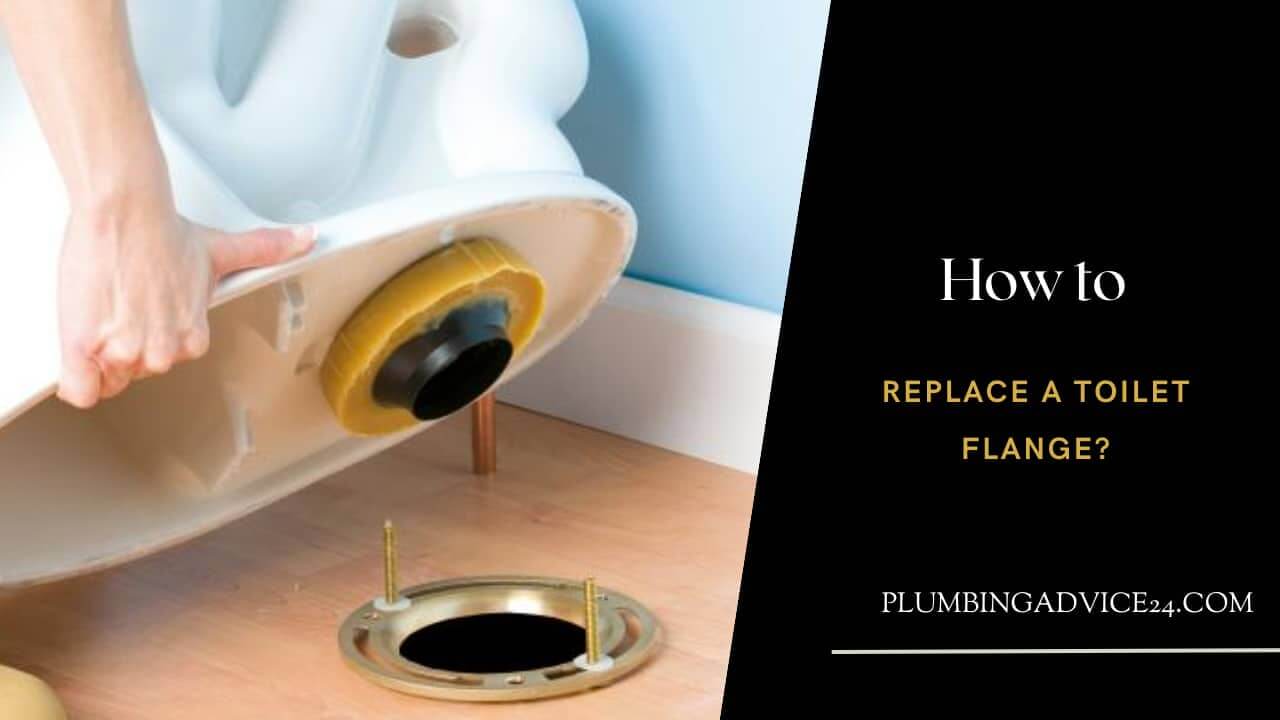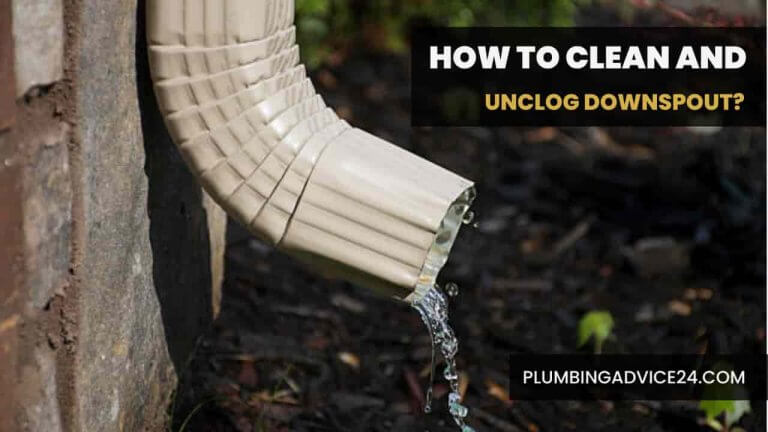What Is a Toilet Flange and How to Replace It?
A toilet flange is essential to a toilet installation because it connects the toilet bowl to the drain pipe and ensures a safe and leak-free connection. A toilet flange commonly made of PVC or cast iron is erected on top of the floor and fastened to the subfloor, with its aperture fitting tightly around the drain pipe to establish a seal. In this post, we will discuss what a toilet flange is and the purpose of a toilet flange.
What Is a Toilet Flange?
A toilet flange is a plumbing fitting used to connect the toilet bowl to the drain pipe on the floor. It is also sometimes referred to as a closet flange. The toilet flange is mounted on top of the drain pipe and serves as a stable base for the toilet to sit on.
The flange in the bathroom closet connects the washbasin drain to the rest of your home’s plumbing. This connection might create problems if it breaks or needs to be put together correctly.
It might also anchor your toilet to the floor, making it sturdy. The flange is often constructed of PVC, copper, steel, or brass pipe and a metal or plastic ring for installation on the bathroom floor. The flange will then be sealed to the toilet drain with a wax ring, preventing leaks.
Depending on the drain pipe size, the optimal width for a toilet flange is between 3 and 4 inches. The pipe and flange should be able to move over or into one other with ease. The length of the line may need to be adjusted depending on the thickness of your floor covering. Using a flange with the incorrect width or height may make fitting difficult and result in leaks after the flange is in place.
What Is the Purpose of a Toilet Flange?
Pipe fittings, also known as closet flanges or toilet flanges, may be manufactured of PVC, plastic, or metal, among other materials. Flanges may also be made of brass, copper, and stainless steel.
Toilet flanges may be built of various materials and come in multiple forms and sizes. Most flanges are 4 inches broad on top and 3 inches wide on the bottom.
Many holes in the flat collar go around each toilet flange. The bolts that hold the flange to the floor above the sewage drainpipe will fit into these holes once the pipe has been installed.
A wax ring is placed on top of the flange, between the flange and the toilet, to prevent further leaks. The bathroom is fastened to the flange underneath it rather than the floor.
If the flange is installed correctly, flushing the toilet will deliver water into the sewage system without leaking.
Do We Need a Toilet Flange?
Something awful might happen if a toilet does not have a toilet flange. A bathroom cannot be installed safely without a flange. You may attach a toilet to the floor, but this increases the possibility that water will destroy the flooring and sewage will seep.
If the flange is missing, connecting the toilet to the drain pipe may be difficult. The flange is an essential component of every contemporary bathroom.
Related Post : How to Install a Toilet Flange?
When Should You Replace the Flange on Your Toilet?
Unfortunately, a fixed toilet flange does not exist. Even the most excellent products may depreciate and use over time. They work hard every day at a nasty job they despise, so it’s hard to blame them. When something is constantly immersed in water, it will ultimately deteriorate.
The good news is that a decent toilet flange must only be changed for quite some time after installation. When this occurs, there might be a leak at the toilet’s base.
The bathroom should be more sturdy, shifting slightly from side to side. Check the flange that supports the toilet to the floor if you’ve seen any of these issues in the bathroom.
How to Replace a Toilet Flange?
It’s easy to replace a toilet flange on your own. A plumber could repair it quickly, but you can handle it yourself. If things are going differently than expected, contact a professional plumber so he may correct the toilet as soon as possible if it is rocking and leaking.
- The first step in repairing the toilet is to switch off the water supply to the tank. Flush the bathroom often until no water remains in the tank. The water supply to the tanks should then be switched off.
- Before disassembling the toilet, place old towels on the floor to cover it. The tank must be removed first, followed by the bowl. Each tank side has a hole designed to accommodate a fastening pin. You’ll need to remove them to remove the tank from the bowl. Next, loosen the nuts from the floor bolts and bolt caps at the toilet’s base.
- You may need to move the toilet a little before raising it off the floor to let the wax seal release. You may skip this step if your bathroom is already loose in its mounts.
- You’ve most likely discovered the drain pipe, which may be challenging. At this point, you may block the pipe with an old cloth to keep the odors inside.
- You must cut through the wax seal before removing the old flange. Remove the wax off the flange using a paint scraper. Then, to get it off the floor, unscrew the fasteners.
- Most flanges are simple to remove from the floor since their screws only need to be unscrewed. If that is not the case, you may want the assistance of a plumber to remove it.
- You may measure the present flange on your toilet or bring it to a hardware store and have them measure it. The new flange will connect to the ground, similar to the previous one. After installing the bolts, tighten them using the washers and nuts.
- Once the wax ring is in position and centered on the flange, carefully drop the bowl into place. First, replace the toilet bowl on the tank. Then, using the bolts on either side of the tank, secure it.
- You can finally turn on the water and try again. Flush the toilet after the water level in the tank has reached the desired level. You should be proud of yourself if you can’t discover any defects or shortcomings.
Congratulations, You’ve just finished replacing the new flange properly.
How Much Does a New Toilet Flange Cost?
Any nearby hardware shop can provide the supplies you need to fix or replace the flange for less than $25. This might be an excellent task for you to do on your own if you have the tools and strength to move the toilet. However, because a plumber is certified to conduct the task, you can be sure it will be done correctly if you engage them to replace the flange.
But if you’re going to have a professional replace the toilet flange, you should expect to spend anywhere from $150 – $300. This repair is usually only necessary if the flange is severely damaged or if it is not sealed.
Conclusion:-
A toilet flange is a component that connects the toilet to the sewage drainpipe and helps to anchor the toilet to the bathroom floor. It is typically made of PVC, copper, steel, or brass pipe and a metal or plastic ring for installation on the bathroom floor. The purpose of a toilet flange is to prevent leaks and ensure that the toilet flushes appropriately into the sewage system. It is essential to have a toilet flange in every modern bathroom.
Related Post : How to Properly Set Your Toilet Flange Height?
What Is a Closet Flange?
A closet flange is a plumbing fitting used to connect the toilet bowl to the drain pipe on the floor. It is also sometimes referred to as a toilet flange. The closet flange is mounted on top of the drain pipe and serves as a stable base for the toilet to sit on.
What Does a Toilet Flange Look Like?
A toilet flange is usually round and about 4 inches in diameter. It is usually made of PVC, ABS, or cast iron and is mounted on top of the drain pipe on the floor. The top of the toilet flange has a raised lip or collar that provides a sealing surface for the wax ring that seals the toilet to the drain pipe.
While the bottom of the toilet flange has a flared or angled shape that connects to the waste pipe in the floor. The flange may have slots or holes around the perimeter that allow it to be screwed or nailed to the floor for added stability.
What Does a Toilet Flange Do?
The toilet flange is mounted on top of the drain pipe and serves as a stable base for the toilet to sit on. A raised lip on top of the toilet flange seals the connection between the toilet and the drain pipe. While the angled or flared shape at the bottom of the toilet flange connects to the drain pipe in the floor and allows the waste to be flushed out of the toilet and into the sewer system. If the flange is installed correctly, flushing the toilet will deliver water to the sewer system without leaking.
Where Is the Flange on a Toilet?
The flange on the toilet is located on the drain pipe that extends from the floor under the toilet. The toilet flange is mounted on top of the drain pipe and provides a stable base to bolt the toilet.
If You Liked This Post? So Share It with Your Friends
Suggested Articles:
